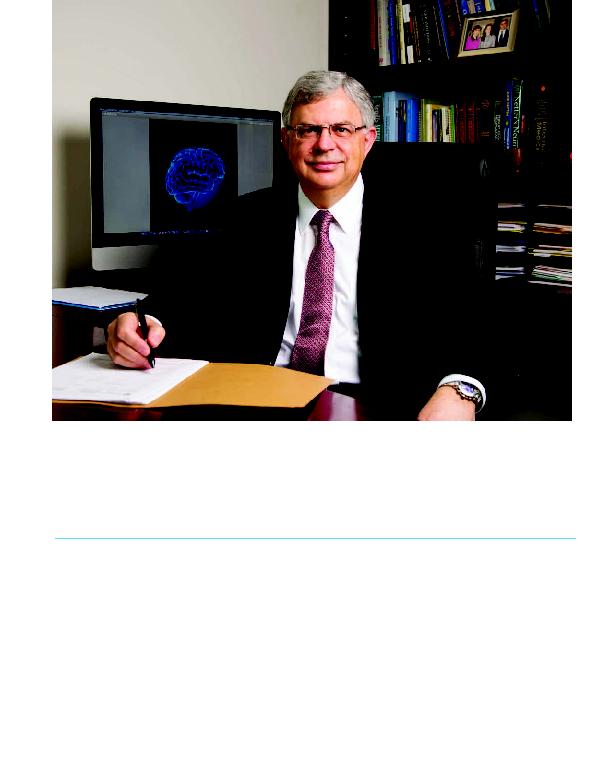
of Neurology, Robert Wood Johnson Medical School and
several perspectives. On the clinical side, the strengths of one
school can now be used to satisfy needs in the other. For exam-
ple, deep brain stimulation for Parkinson's disease at Robert
Wood Johnson Medical School helped to enhance the program
at New Jersey Medical School. The long-standing muscular dys-
trophy clinic at New Jersey Medical School now has a presence
at Robert Wood Johnson Medical School--Muscular Dystro-
phy Association certification was granted for both campuses.
erage, faculty from the other medical school stepped in.
"Collaboration is happening more and more every month,"
says Dr. Dhib-Jalbut.
and reciprocated elective time for residents at each location
where a particular clinical experience is stronger. In the area
of research, there is more meeting of the minds on different
specific disease conditions such as MS, Alzheimer's disease,
and epilepsy. The biggest benefit may be in clinical trial
enrollment when a specific population of patients is required.
are doing just that and proving there are also benefits to the dual chairs. Above all, they're sensing a synergy in
purpose that is igniting ideas and creating a more inclusive environment for faculty, students, clinicians, and the
communities they serve.
O
E
M
R
S
O